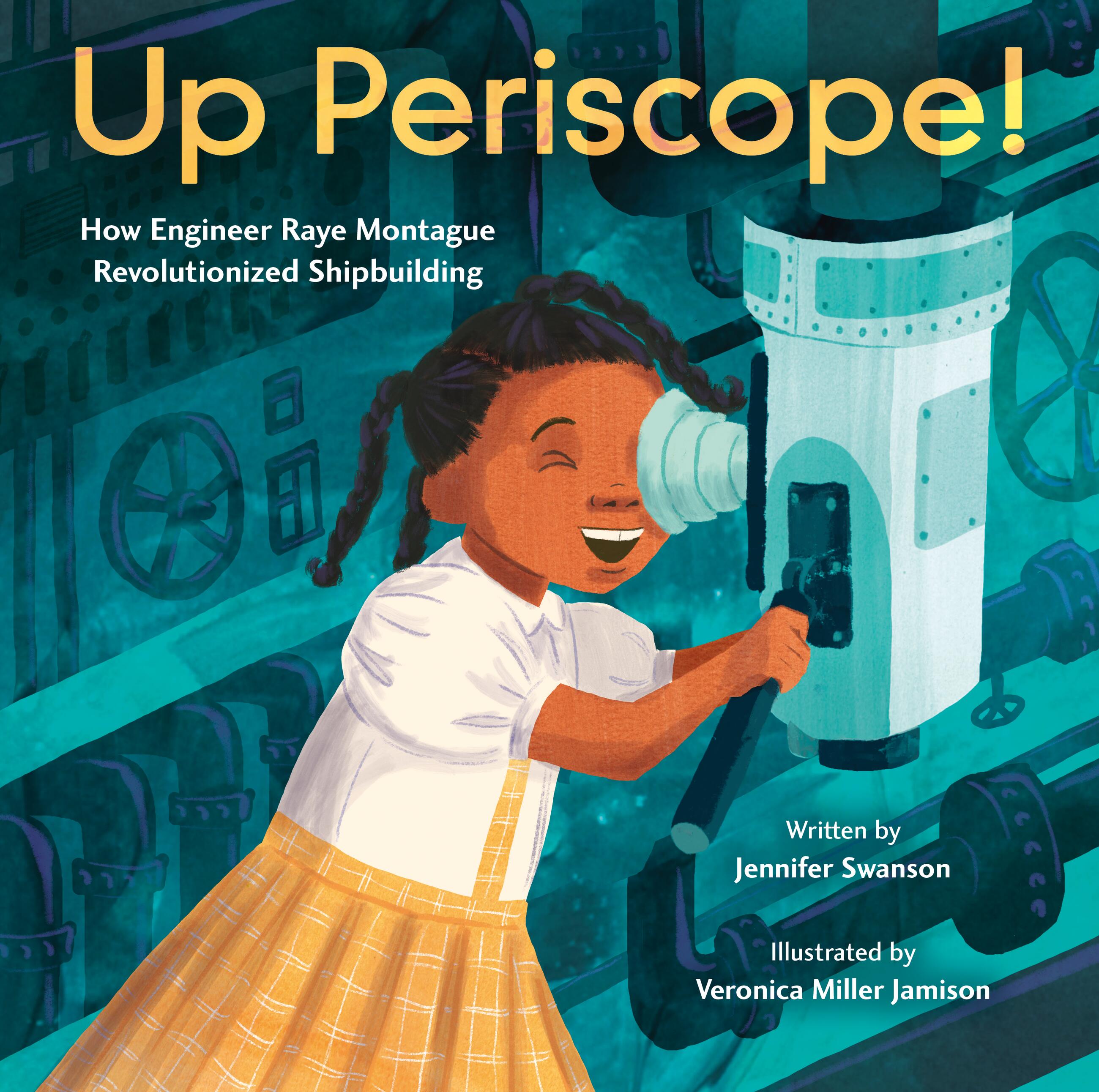If you have a daughter interested in STEM, we hope you’ll introduce her to “Up Periscope,” a beautifully written and illustrated story about Raye Montague, the engineer who revolutionized how the U.S. Navy designed its ships. Raye wrote code that reduced the design process to 18 hours and 26 minutes versus two years. Now that’s a real change to government efficiency!
The book’s publisher, Little, Brown Books for Young Readers, writes about Raye’s story: “Girls like Raye Montague weren’t supposed to like math or science, or go to engineering school. But tenacious Raye had a plan, one that eventually took her all the way to the US Navy. There, she was assigned an impossible task: to come up with a single computer program that could design every part of a ship. It had never been done before—but Raye’s groundbreaking program revolutionized the way ships and submarines were built, and set her on a path to become a pioneering figure in naval engineering and the navy’s first female program manager of ships.”
Introducing…Raye Montague, the U.S. Navy’s first formal engineer
How and when did she decide to become an engineer? “I made that decision when I was seven years old. The United States captured a German min-submarine off the Carolinas and brought it to downtown Little Rock, and my grandfather took me down to see it. I saw the dials and mechanisms and looked through the periscope,” Raye said at a Women’s History Month event in 2017.
It really does take a village. During that submarine visit when she was seven years old, Raye asked a tour guide what she needed to know to operate a submarine. His response: “Oh, you’d have to be an engineer but you don’t ever have to worry about that.”
“Well, I didn’t realize that I had been insulted because of my gender and my race,” said Montague in 2017. She asked her mother to find out what was required to be an engineer and was told, “it was math and science and thinking outside of the box.”
“Aim for the stars, at the very worst, you’ll land on the moon.”
Montague’s mother as well as her eighth grade teacher encouraged her to dream big and think out of the box. Her teacher’s advice: “Aim for the stars, at the very worst, you’ll land on the moon.”
What was her educational path to becoming the Navy’s first female engineer? Her high school required girls to take four years of home ec classes, and wouldn’t allow her to take shop so she could design and build things. Her mother “did battle” with the school administration and won, so Rae took four years of shop.
When it was time for college, the only school in Arkansas that offered a degree in engineering was the University of Arkansas. In 1953, they wouldn’t let Black students enroll, so Raye enrolled at the Arkansas Agricultural, Mechanical and Normal College, an HBCU. She earned a B.S. in business.
An unconventional path to HEIC. After college, Raye was hired as a clerk-typist for the Navy. She took computer programming classes at night and worked on every project that came her way, until she was asked to design a Navy ship using a computer program she wrote. In other words, Head Engineer in Charge.
How’d that work out? Read “Up Periscope” (by yourself or to your daughter) and find out :)
P.S. Please check out “Up Periscope” from your local library or buy it from an indie bookstore, don’t buy from you-know-where.
(Cover art courtesy of Hachette Publishing/Little Brown Company. Photo of Raye Montague courtesy of About You magazine.)


Comments
Post a Comment